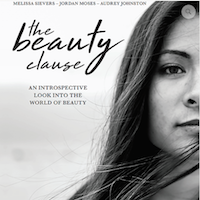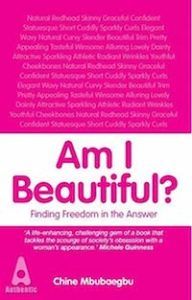I had the pleasure of growing up in a small city in the east of England called Norwich. It’s a fine city and was voted the number one city in England to raise kids and, for the most part, my childhood was great. My family were, however, one of the very few Nigerian families in the city. Let’s be honest, we were one of the only few black families in the city. I was the only black kid in my first and middle school. In high school there were approximately four of us. Nobody ever told me I wasn’t beautiful, but children are perceptive, children know how to put things together and come to conclusions. And the images I was seeing and reading were very different from what I was seeing in the mirror. I love a good functional book on beauty. Being a book enthusiast, YouTube tutorials aren’t enough. I want to see pen on paper manuals. If you want to know how to do something, turn to a book. The Bobbi Brown Makeup Manual is a great foundational book for anyone with even the slightest interest in makeup. It even features a diverse cast of models before it was fashionable to do so. It’s a manual that says, “We have makeup for you. You matter.” Pretty Honest is another good manual in which Sali Hughes uses humour to break down many of the lies of the beauty world. You can call it a beauty manual. But in many ways it’s a feminist love letter to makeup. When it comes to human beings, there is no universal objective standard on being beautiful. We all come with our presuppositions and expectations, influenced by our cultures, our families and our friends. With humans, character can affect the aesthetics both positively and negatively, as can the degree to which someone reminds you of someone else in your life who was either a great positive or negative. In human beings, aesthetic beauty is so entwined with inner beauty that beauty manuals do us a disservice to only rely on one. Below are three books I have read recently that have provided an introspective look at what it means to be beautiful and the struggles many of us go through to achieve a societal norm that is in many ways damaging. These books investigate being beautiful in a way that goes beyond the aesthetics and touches the soul. They are books on beauty that go beyond aesthetics.
The Beauty Clause by Melissa Sievers, Jordan Moses, and Audrey Johnston
A compilation of stories from 15 countries across the United States, Europe, the Middle East and other parts of Asia exploring and celebrating what it means to be beautiful in this array of cultures and world views. Touching on issues of rape culture, stereotypes, and body shaming, The Beauty Clause brings awareness to the different standards of beauty around the world with the hope of helping other recognise beauty in others as well as in themselves.
Am I Beautiful by Chine Mbubaegbu
Nigerian British author Chine Mbubaegbu explores our innate desire to be beautiful and how we combat a society where the media bombards us with images of beauty standards that are impossible to obtain. Mbubaegbu explores the affects of Barbie dolls on young girls and the way in which black girls in the West can feel like they’ve lost in the genetic lottery. She also looks at how these societal standards have influenced the church and affected the conversation on being made in the image of God.
Black is Beautiful: A Philosophy of Black Aesthetics (Foundations of the Philosophy of the Arts) by Paul C. Taylor
Taylor combines philosophical aesthetics and black cultural theory in this commentary on beauty, specifically in regards to black culture. In the first philosophical treatment of this kind, Taylor explores the aesthetics of black expressive culture and what this means in the West.




